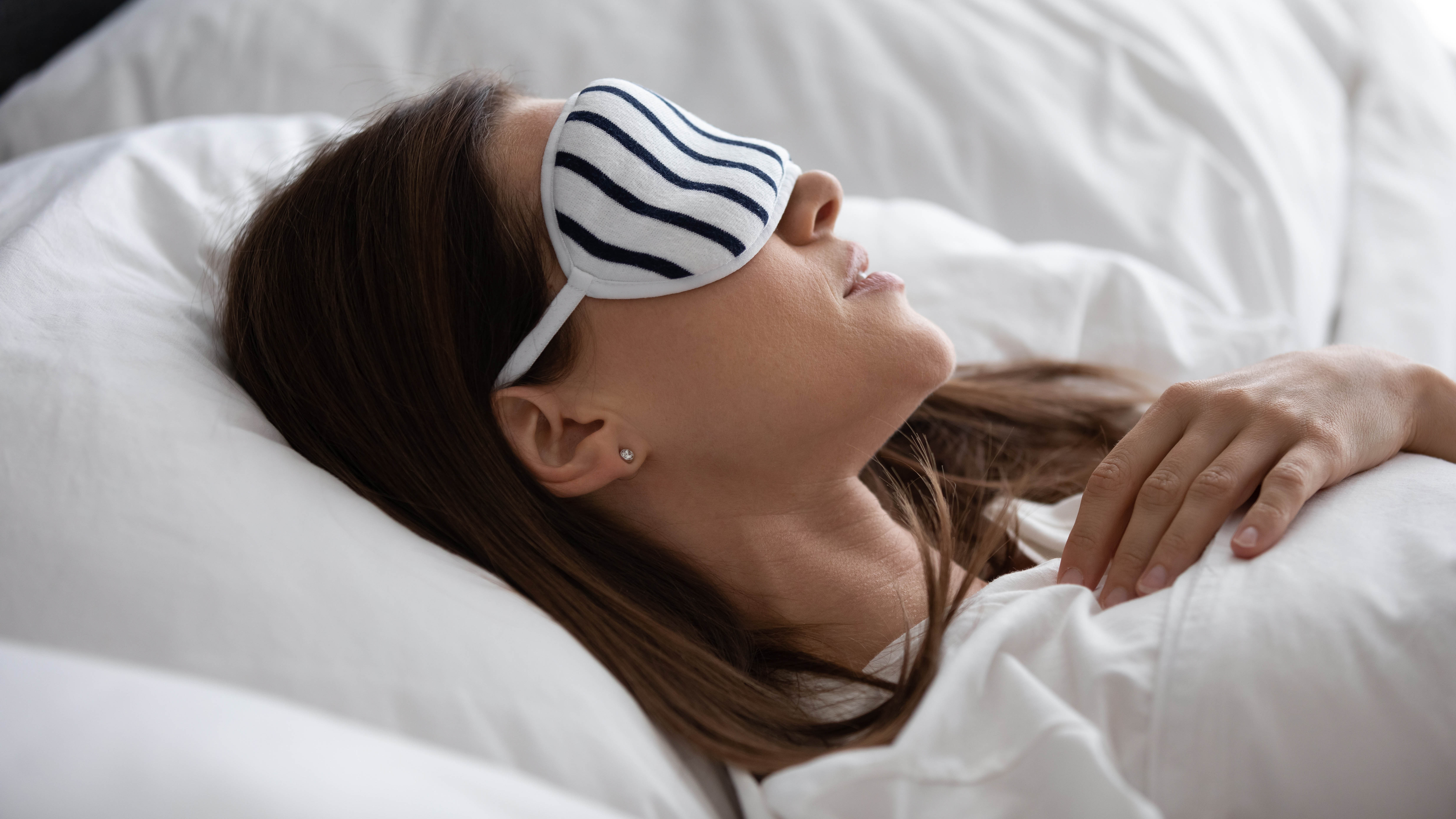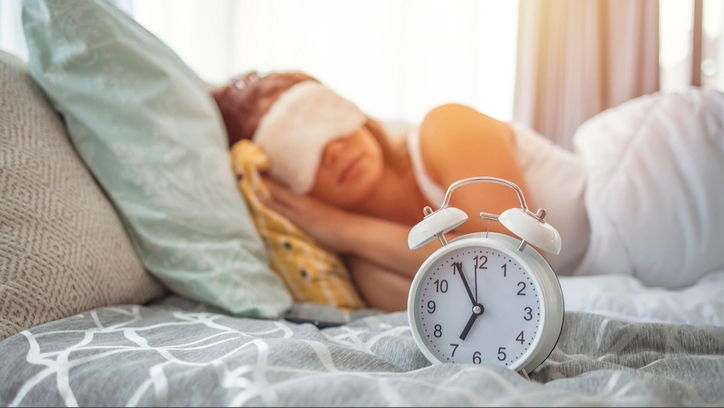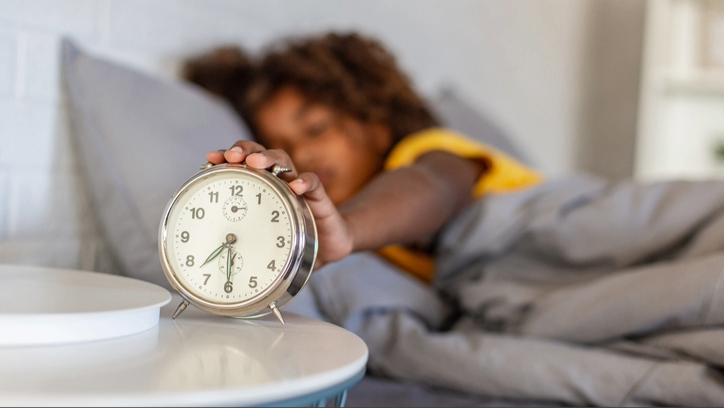People are swapping their nighttime sleep for multiple naps — but what is polyphasic sleep and is it dangerous?
We ask an expert about the Uberman, Everyman and Triphasic sleep schedules

Official advice says that healthy adults require 7 to 9 hours of sleep every night for physical and mental health. Anything below this and you risk long-term sleep deprivation, which in turn elevates your risk of a plethora of other health conditions, including heart disease, blood pressure and lowered immunity.
Polyphasic sleep schedules, however, disrupt the widely acknowledged method of getting rest, swapping a lengthy nighttime sleep with multiple naps over a 24-hour period.
In an increasingly busy world, people are seeking hacks to fast track their rest and increase the amount of hours in the day to work or socialize. Many are turning to extremes, like polyphasic sleep. But how safe are these alternative sleep schedules?
We asked Dr. Pamela Tambini, a double board-certified physician and Medical Director at Engage Wellness, for her opinion on the risks and benefits of polyphasic sleep — examining the Uberman schedule, Everyman schedule and Triphasic schedule — and asking whether it's dangerous, or whether you should give it a go. Let’s take a closer look.

Dr. Pamela Tambini is a highly trained physician with a background that includes an undergraduate degree from the University of Hawaii at Manoa, medical training at Ross University, and residency at the University of Miami School of Medicine’s Palm Beach Regional Campus. She is double board-certified in Internal Medicine and Addiction Medicine and has dedicated the past eight years to working in the treatment field.
What is polyphasic sleep?
Polyphasic sleep means sleeping at intervals every 24 hours, rather than sleeping for 7 to 9 hours at night. This means taking regular shorter naps as well as taking short sleeps. There are different ways to achieve polyphasic sleep, but generally there are three main schedules, Uberman, Everyman and Triphasic, which we take a closer look at below.
Polyphasic sleep is increasing in popularity, with online influencers trying this radical approach to rest in an attempt to increase their productivity and energy levels. It fits within the general trend of ‘bio hacking,’ a term used to describe small changes in lifestyle, diets and habits that are aimed at improving wellbeing.
The 3 types of polyphasic sleep schedules
With some expert advice, we’re breaking down the three types of polyphasic sleep to find out what they entail, as well as their risks and benefits.
| Polyphasic sleep | Schedule over 24 hours | Total sleep duration |
|---|---|---|
| Uberman | 6 x 20-minute naps | 2 hours |
| Everyman | 1 x 3-hour sleep, 3 x 20-minute naps | 4 hours |
| Triphasic | 3 x 1.5-hour sleeps | 4.5 hours |
1. Uberman sleep cycle
The Uberman schedule is the most extreme type of polyphasic sleep. Without any longer sleeps, the Uberman requires six 20-minute naps, spaced evenly throughout 24 hours. This means you would nap every 4 hours. While you can choose what times you’d like to take your nap, an example schedule may look like this:
10am: 20-minute nap
2pm: 20-minute nap
6pm: 20-minute nap
10pm: 20-minute nap
2am: 20-minute nap
6am: 20-minute nap
This amounts to just two hours of sleep every 24 hours, which is well below the advised amount. “This schedule is designed to maximize waking hours," Dr. Tambini explains. "However, it severely limits deep, restorative sleep, which is essential for both brain and body recovery."
So, will this help productivity? "The scientific evidence supporting its effectiveness is minimal, and most people find it unsustainable due to the physical and mental toll it takes," Dr. Tambini says. Give this one a miss, we think.

2. Everyman sleep cycle
The Everyman schedule is slightly less extreme, allowing one longer duration of sleep. The schedule requires one 3-hour sleep followed by three 20-minute naps throughout the day.
This amounts to 4 hours of sleep every night, which, while it’s double the amount of sleep than the Uberman, it’s still drastically less than official advice. An example schedule would be:
10am: 20-minute nap
2pm: 20-minute nap
6pm: 20-minute nap
2am: 4-hour sleep
“While this schedule offers a bit more rest than the Uberman schedule, it still significantly reduces total sleep time. It may be effective for short periods or specific situations, but the disruption to natural sleep cycles makes it difficult to maintain in the long term,” Dr. Tambini says.
3. Triphasic sleep cycle

The Triphasic sleep schedule means you break your sleep into three shorter sleeps that occur in the evening, at night and in the afternoon. You can divide up the sleeps as you wish, but usually these sleeps are around 1 ½ hours long, totalling 4-5 hours of sleep every 24 hours.
An example sleep schedule would be:
10pm: 1.5 hour-nap
5am: 1.5 hour-nap
2pm: 1.5 hour-nap
This is the least extreme and Dr. Tambini says this schedule “aligns somewhat better with natural circadian rhythms; however, it can still fragment sleep and disrupt deep sleep and REM sleep cycles.”
She warns that “While some individuals may adapt to this schedule, there is still a risk of sleep deprivation.”
Will polyphasic sleep help productivity?
While you’ll have more hours in the day to take on new projects, the likelihood that you’ll have the energy to complete these tasks is low. Dr. Tambini says that “polyphasic sleep schedules aim to increase productivity by freeing up more waking hours, the reality is more complex. The lack of consolidated sleep can impair cognitive function, decision-making, and focus, often negating the extra time gained.”
So, realistically, polyphasic sleep won’t see a huge boost in your motivation. “Any initial productivity boost is typically short-lived as the body struggles to cope with insufficient rest,” Dr. Tambini says.

To ensure your safety, Dr. Tambini recommends consulting with a sleep specialist or doctor before attempting to follow a polyphasic sleep schedule. If you have and are still keen to give it a go, she recommends starting with a less extreme schedule like the Triphasic or Everyman and monitor how your body responds.
Dr. Tambini has these additional guidelines:
- Ensure naps and core sleep times are consistent to minimize disruptions
- Avoid caffeine and other stimulants that might interfere with sleep cycles
- Maintain a sleep-friendly environment — dark, quiet, and comfortable
- Be mindful of warning signs like persistent fatigue, mood changes, or cognitive difficulties, and stop if these arise
Is polyphasic sleep dangerous?
To put it short, yes, polyphasic sleep can be very dangerous. Dr. Tambini warns that “long-term adherence to polyphasic sleep can lead to chronic sleep deprivation, increasing the risk of health issues such as weakened immunity, cardiovascular disease, hormonal imbalances, and cognitive decline.”
Sleep deprivation and sleep disruption can have a serious impact on your health. In fact, Dr. Tambini says that “disrupted circadian rhythms can also negatively affect metabolism, emotional health, and overall well-being, making polyphasic sleep unsuitable for most people.”
What is biphasic sleep?
Biphasic sleep is similar to polyphasic sleep, but it's a much less extreme and a much more common method. It means splitting your sleep schedule into two main sleep periods, and most people will still end up sleeping for at least 7 hours every 24 hours. This can take many different forms, some of the most popular ones include:
- Short nap: This involves sleeping around 6-7 hours a night and napping for 20 minutes during the day.
- Long nap: This involves sleeping 5-6 hours a night and napping for 1-2 hours during the day.
- Two sleeps: This involves sleeping for around 4 hours in the evening to the night, waking for an hour or two, before sleeping for another 4 hours until the morning.
Biphasic sleep can suit many people's schedules, especially shift workers or those working nights. It's a safer alternative to polyphasic sleep because you're still getting enough sleep every day to avoid sleep deprivation.
Sleep tips for productivity
“While polyphasic sleep might seem an intriguing way to gain more waking hours, the risks to physical and mental health make it impractical for most," says Dr. Tambini. "Quality, consolidated sleep is vital for overall health and productivity, and it’s better to focus on optimizing your natural sleep habits rather than experimenting with extreme schedules."
So, with that in mind, here are our top sleep tips to improve your productivity.
Keep a consistent sleep schedule
A consistent sleep schedule will help regulate your circadian rhythm. This is your body’s internal clock that dictates when you naturally feel sleepy and when you feel energized.
By going to sleep at the same time every night and waking up at the same time (even on weekends,) your body will become accustomed to the routine, producing cortisol (the hormone that makes us feel awake) when you need to get going and melatonin (the hormone that causes sleep) when it’s time to wind down in the evenings.
This means you’re less likely to get dips of energy throughout the day, meaning your energy levels will be more consistent, helping productivity and motivation.

Create a nighttime routine
A nighttime routine will help you keep a consistent sleep schedule. Humans are creatures of habit and routine, so by repeating certain activities every night will help your body know when it’s time to switch off.
Everyone’s optimum routine will be different, but there are certain science-backed activities that can encourage sleep and the production of melatonin. For example, starting your routine with a hot shower or bath is a good idea because as you move from a warm bathroom to a cooler bedroom, your core body temperature will drop, which is a key signifier to your body that it’s time for sleep.
Similarly, dimming the lights, reading a book, avoiding screens and listening to calming music can reduce stress and calm the body and mind.
Get enough daylight

Daylight is essential for regulating production of melatonin and cortisol. Without getting enough daylight throughout the day, your body will struggle to produce melatonin once it gets dark in the evenings.
So, to make it easier to fall asleep, get out for a morning walk or ensure you get at least half an hour to an hour of sun exposure everyday. It’s been proven that sunlight in the morning is more effective in regulating your sleep than other times throughout the day.

Lauren is an experienced writer and editor in the health and lifestyle industry and has led many campaigns and projects that deliver news, advice, and research on all things sleep. As the Sleep Features Editor for Tom’s Guide, Lauren writes, commissions and edits sleep and mattress content, from in-depth how-tos in sleep and mattress health to interviews with doctors and neuroscientists on the latest news in sleep. Lauren regularly tests new sleep tech and accessories to evaluate their effectiveness for getting good quality sleep and easing specific sleep struggles like nighttime anxiety. Alongside this, Lauren reports on the best mattress brands out there, like Helix, Saatva, and DreamCloud, helping readers find the right mattress for them and the best deals on them.
